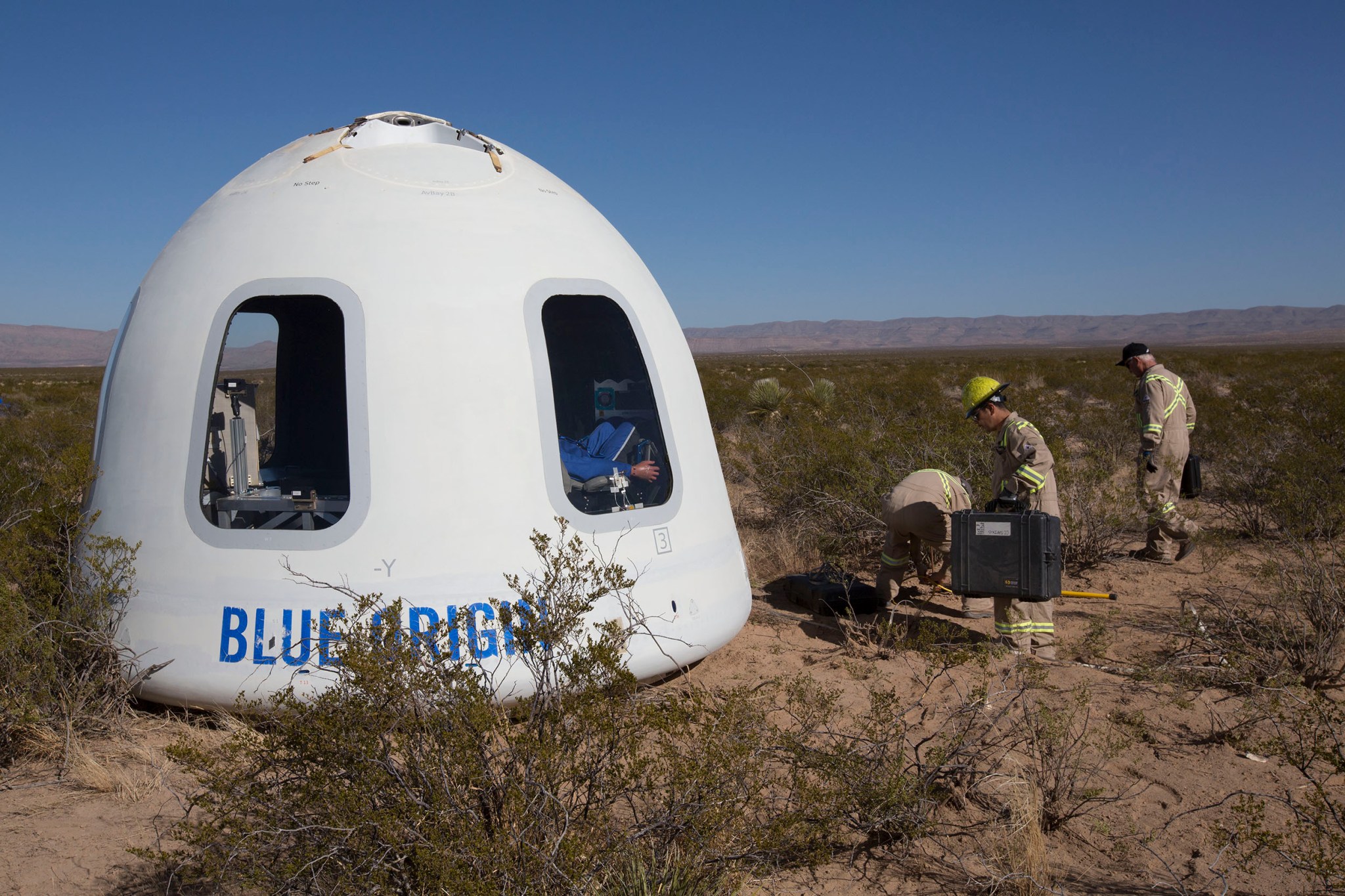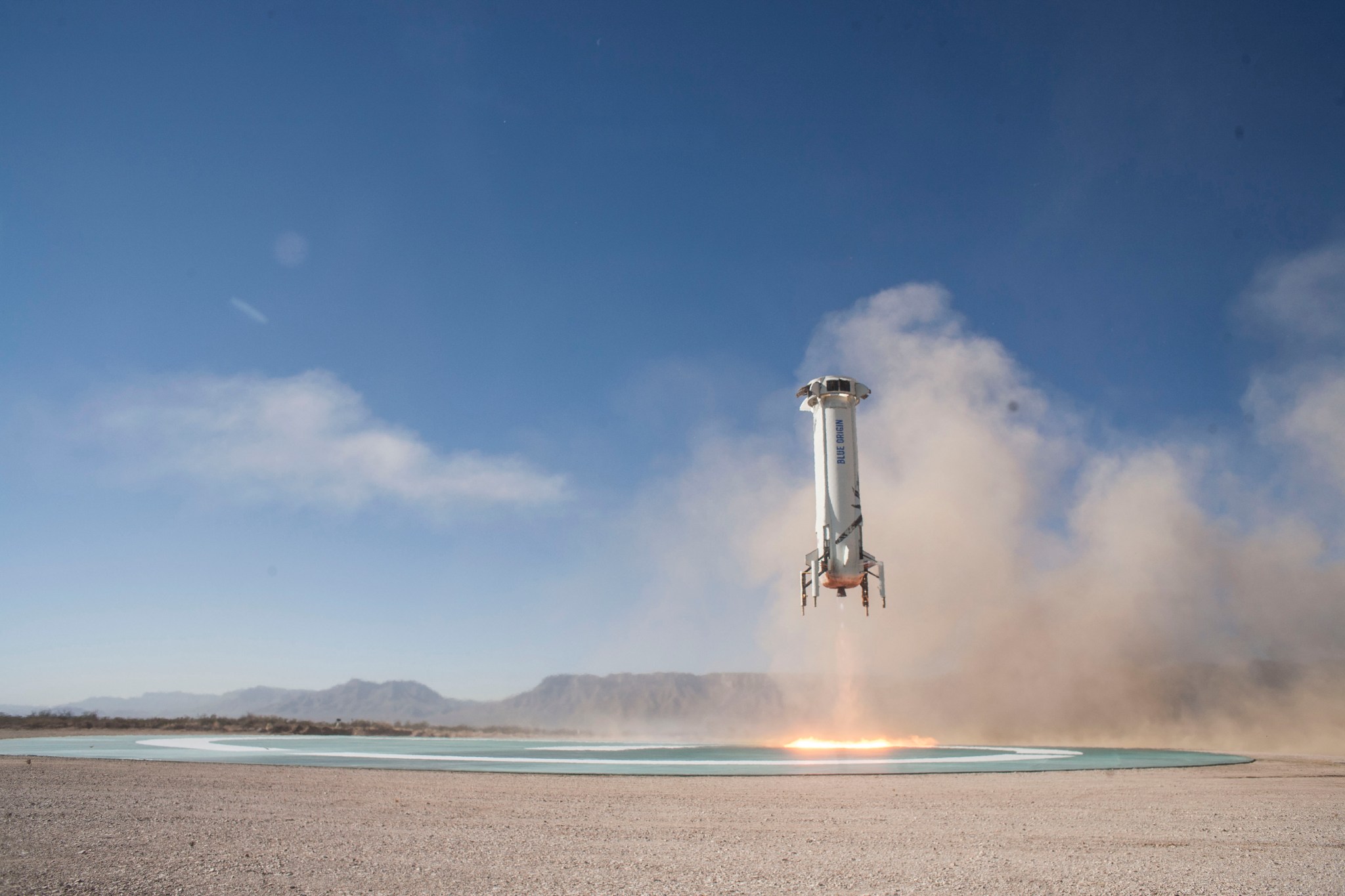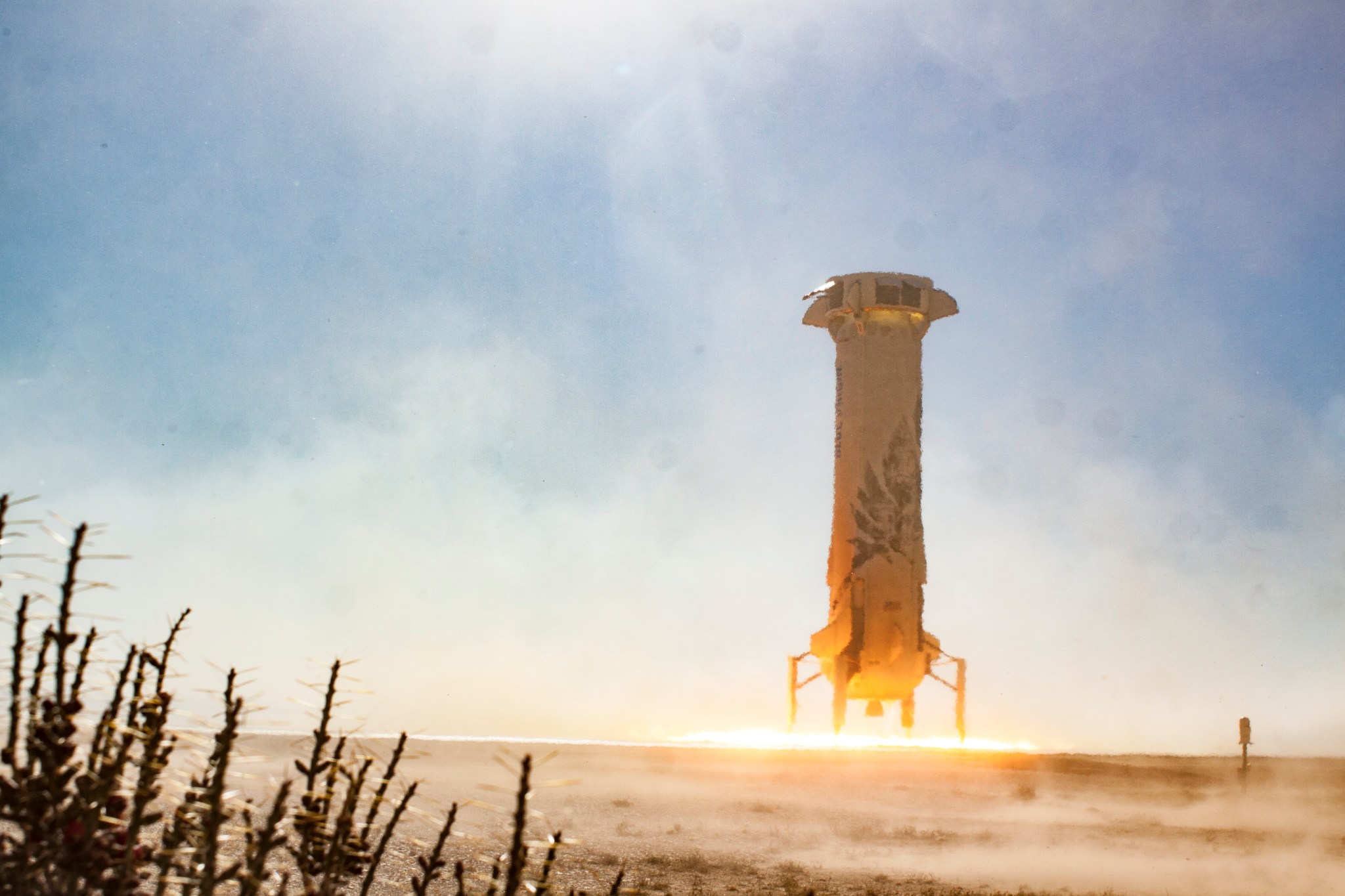Blue Origin successfully launched its New Shepard reusable space vehicle on Dec. 12 carrying a medical technology that could potentially treat chest trauma in a space environment.
The New Shepard reusable vertical takeoff and vertical landing space vehicle was launched with the experimental technology from Blue Origin’s West Texas launch site. In addition to NASA funding non-government researchers to fly payloads, Blue Origin is a Flight Opportunities program launch provider for government payloads. The Flight Opportunities program, is managed under NASA’s Space Technology Mission Directorate (STMD).
“This flight marks the first of many Flight Opportunities’ flights of payloads with Blue Origin,” said Ryan Dibley, NASA Flight Opportunities campaign manager for Blue Origin. “New Shepard brings new capabilities to the program. This launch platform allows for larger payloads, provides lower launch accelerations, and maintains a sealed pressure environment.”
With NASA funding to support the flight cost, the Evolved Medical Microgravity Suction Device technology was developed by Charles Marsh Cuttino and his team at Orbital Medicine, Inc. in Richmond, Virginia.
The device could potentially assist in treating accidents such as a collapsed lung where air and blood enter the pleural cavity. The payload was constructed in collaboration with the Purdue University of Aeronautics and Astronautics in Indiana.

Currently astronauts and cosmonauts have to return to Earth quickly for medical treatment should an incident arise with chest trauma on the International Space Station. Collapsed lungs are treated on Earth with gravity dependent collectors that will not work in space.
“My hope is that in the future, this type of medical device will be able to save the life of an astronaut, to continue their mission of exploration,” said Dr. Cuttino. “These types of medical treatment options could be required to explore the Moon and Mars.”
The new technology has a suction system that collects the blood in microgravity and allows for the lungs to continuously inflate as well as store blood for transfusion. The device also has a pneumothorax simulator, which simulates an injured person and shows how the device removes the air and blood to promote healing.
Orbital Medicine’s suction device technology was selected in Nov. 2015 under a NASA Research Announcement: Space Technology Research and Development, Demonstration and Infusion, or Space Technology REDDI-2015. The device has already flown on parabolic flights with past program funding.
Through the Flight Opportunities program, STMD selects promising technologies from industry, academia and government for testing on commercial launch vehicles. The Flight Opportunities program is funded by STMD, and managed at NASA’s Armstrong Flight Research Center in Edwards, California.
STMD is responsible for developing the crosscutting, pioneering, new technologies and capabilities needed by the agency to achieve its current and future missions.
For more information about the Flight Opportunities Program, visit:
https://www.nasa.gov/directorates/spacetech/flight_opportunities/index.html
For more information about the Space Technology Mission Directorate, visit:
https://www.nasa.gov/spacetech
Leslie Williams
NASA Armstrong Flight Research Center































